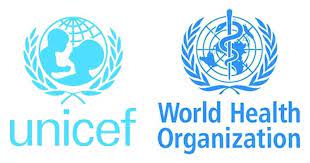By Muhammad Amaan
The Federal Government of Nigeria in partnership with the World Health Organisation (WHO) and the United Nations Children’s Fund (UNICEF) would train medical professionals on the right application and handling of oxygen as a drug.
The initiative is in line with the FG’s resolve to bridge the oxygen application deficit gap among health practitioners and the fallout of some challenges faced by the country during the COVID-19 pandemic.
Speaking during the three-day workshop on ‘Dissemination of the National Medical Oxygen Document for North-East states,’ Gombe State Commissioner for Health, Dr Habu Dahiru, thanked the organisers for the programme.
He explained that the aim of the workshop is to train health workers through a handbook on the best application method of oxygen.
“You know that oxygen is a drug and an essential drug that will be used in the areas of emergency from the labour room to the paediatric ward, theatre.
“Therefore, we want to set up the mechanism where oxygen will be made available to all facilities. Everyone should have easy access to oxygen,” Dr Dahiru said.
The commissioner pleaded with stakeholders to collaborate with states, adding that they know the geographical spread.
“We recommended strongly that when they want to cite such projects, they should come and sit with state officers to look at locations that can be easily accessed,” he advised.
The representative of the Federal Ministry of Health, Oxygen Desk, Hospital Services, Bishara Emmanuel, on his part, said the team was in the state for a review of the 2023-2027 edition of the oxygen dissemination strategy.
He said, “People are dying because of hypoxemia cases. People are dying from lack of oxygen. Oxygen is very limited across the country, and apart from that, we want our health workers to be informed on how to administer oxygen and where to get oxygen. We want them to be familiar with who is supposed to provide the oxygen.
“We have about 56 people participating in this workshop but at the moment we have over 70,” he said.
Emmanuel further informed the gathering that the FG had made enormous investments in making oxygen available.
“Because after the COVID-19 pandemic, we realised there was so much gap in the ecosystem and people were finding it difficult to get oxygen.
“Therefore, the government started by establishing 38 oxygen plants across the country in collaboration with the global fund, FG procured an additional 12 oxygen plants. We have the approval for the 63 oxygen plants across each geopolitical zone.
“We have started the training of biomedical engineers across the country because we realise there are few biomedical engineers in the country. We have also embarked on the piping of oxygen across the 44 tertiary federal hospitals,” he said.
The state Coordinator of WHO, Gombe State Office, Dr Umar Ismail, described WHO as a key stakeholder that spearheaded the policy development.
“We are fully involved, supporting the government right from the planning stage. Was fully involved in building the 2017 – 2022 oxygen strategy in the country.
“The review of 2022-2027; the current one being disseminated today is a result of some of the lessons learnt from COVID-19, whereby patients that needed oxygen were dying due to lack of oxygen.
“For Gombe State, the FG is rolling out the strategy and looking at how states can adopt the strategy to ensure that all health facilities including private health facilities have access to oxygen when patients need it,” he added.




